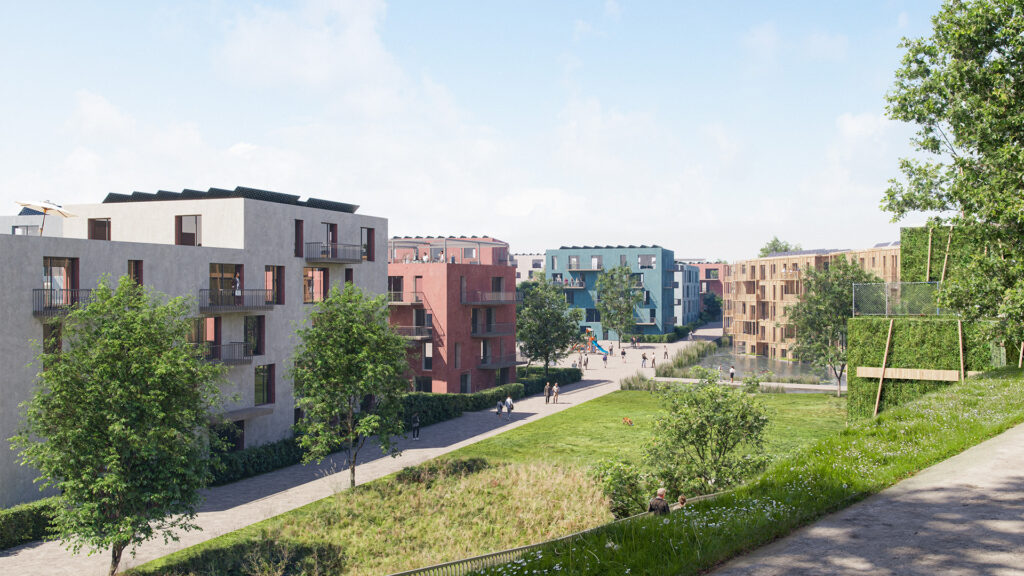
The planned residential quarter on the former locomotive shed site in Wuppertal-Vohwinkel has secured 2nd prize in the architecture competition. The concept combines modern urban development with sustainable solutions, making the area a future-oriented residential location.
At the heart of the design is an innovative mobility concept, with a focus on car-free zones that create more space for pedestrians and cyclists. Two mobility hubs, integrated at the edges of the district, will provide car and bike sharing, as well as charging stations for electric vehicles. These measures aim to not only reduce motorized traffic but also offer residents an environmentally friendly and convenient means of mobility.
Sustainability is another key aspect of the project. The district will be powered by renewable energy sources such as solar and geothermal energy. Green roofs and urban farming will contribute to biodiversity and improve the microclimate. The well-designed open spaces, which will serve both as retention areas for drainage and as recreational spaces, will be another highlight of the district.
A central green boulevard will run through the district, serving as a connecting axis between the BUGA (Federal Garden Show 2031) and the Nordbahntrasse. This boulevard will offer a high quality of life to both residents and visitors and has been created in cooperation with scheuvens + wachten plus.
This project will not only create new housing but also a future-proof, sustainable district that promotes the integration of green spaces and sustainable mobility.
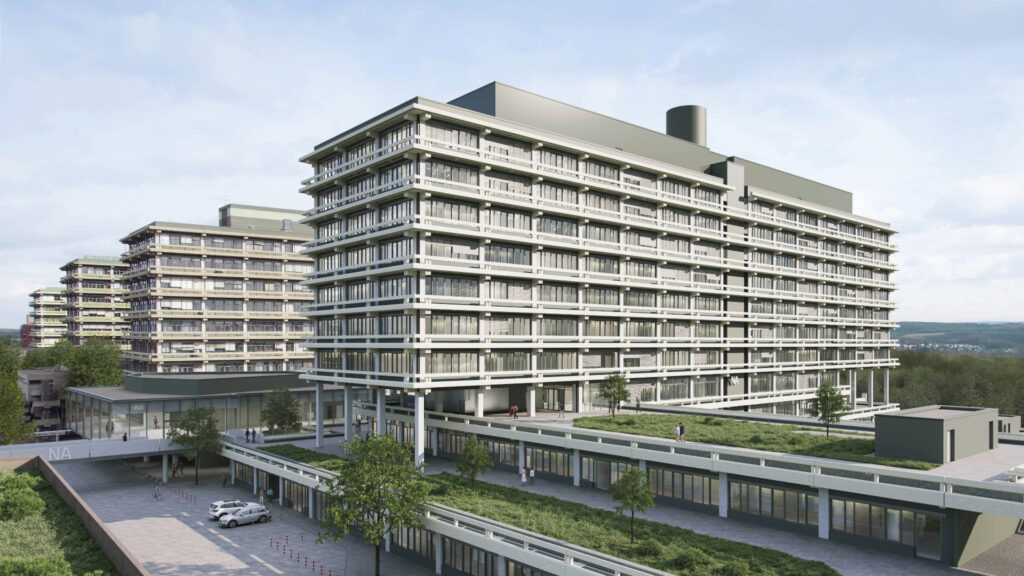
On 22 October 2024, the foundation stone was ceremoniously laid for another major construction project on the grounds of Ruhr-Universität Bochum: the NA complex. After careful investigations, it became clear that the original building could no longer be preserved due to contamination. In close consultation with the relevant heritage protection authorities, the decision was therefore made to construct a new replacement building that takes up the historical character of the old building and at the same time fulfils modern requirements.
Once the construction work has been completed, the new NA complex will be both technically and functionally state-of-the-art. It will also offer attractive areas such as a cafeteria and a library that can be used by the university’s various departments. In addition to this construction project, we have already been involved in the refurbishment of buildings IA, IB and IC as well as the construction of the new research centre (ZGH). These projects emphasise our commitment to maintaining and continuously developing the Ruhr University. They make an important contribution to the revitalisation of the campus by creating modern and attractive spaces for research and teaching.
By laying the foundation stone, we are sending out an important signal for the forward-looking development of the RUB campus and look forward to the completion of the NA complex.
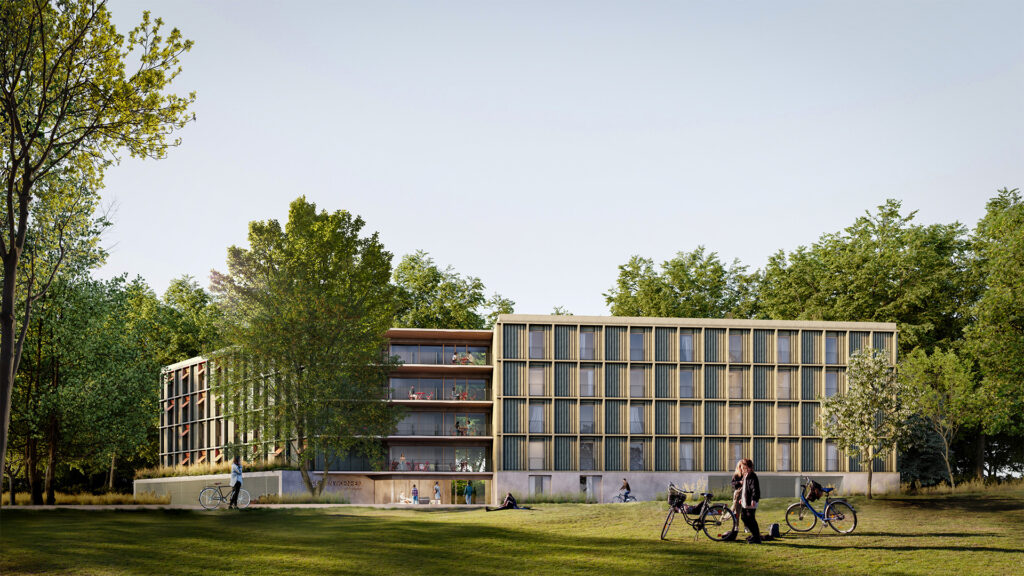
The design for our student residence in Hof, Bavaria, combines modern design with ecological responsibility. The two-part structure opens up towards a protected biotope, creating a quiet retreat for the students. The positioning on the plot and the angled shape of the building create an inviting entrance situation, while the building sections allow for optimal lighting conditions and exciting visual relationships. Three modular staircases ensure flexible and efficient access.
Sustainability takes centre stage in our design: extensive green roofs improve the microclimate and rainwater is collected to irrigate the green areas. The façade made of prefabricated timber elements shortens the construction time and guarantees high quality. The bulkhead construction method ensures fast and cost-efficient realisation, while low-maintenance materials provide a long-lasting and pleasant living environment.
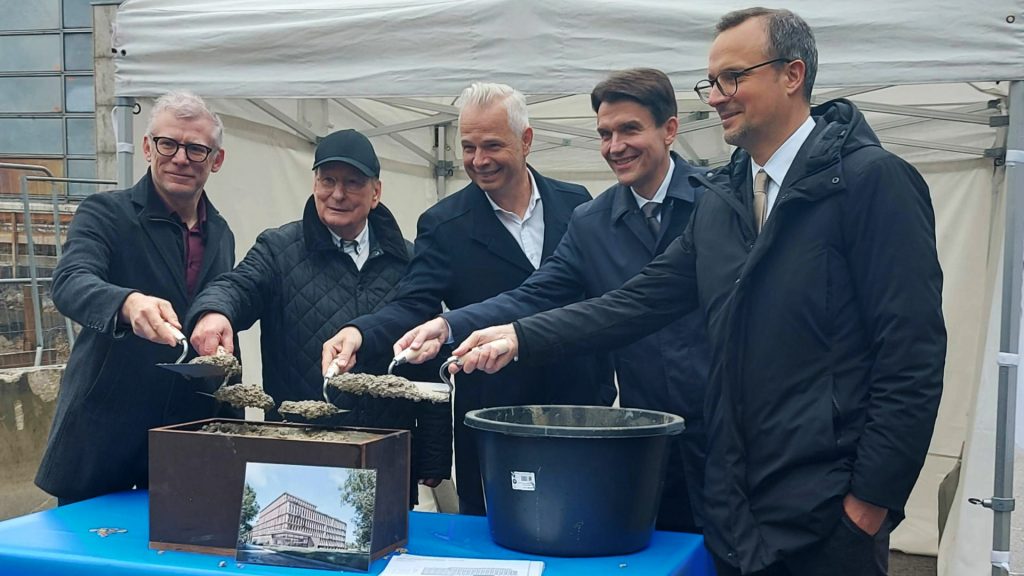
On October 2, the cornerstone for the expansion of the Emschergenossenschaft headquarters in Essen was laid. The historic Emscherhaus, designed by Wilhelm Kreis in 1909 and marking the site of the Water Management Association for over 100 years, will be complemented by an innovative new building from Gerber Architekten. The goal is to unite all employees, who have previously been spread across multiple locations, in one place.
The new timber hybrid building combines listed architecture with modern, innovative solutions. The expansion completes the block perimeter and creates a landscaped courtyard with water features. This blue-green design, which replaces the old parking lot, emphasizes the ecological focus of the Emschergenossenschaft. An additional entrance on the side away from the street ensures a harmonious connection between the new building and the adjacent park.
The expansion of the historic site is a sign of the Emschergenossenschaft’s commitment to sustainable development and innovative architecture. In time for the 125th anniversary of the Emschergenossenschaft in 2025, the new building will connect the history of the Water Management Association with modern, forward-looking workspaces.
Photo: © Gerber Architekten
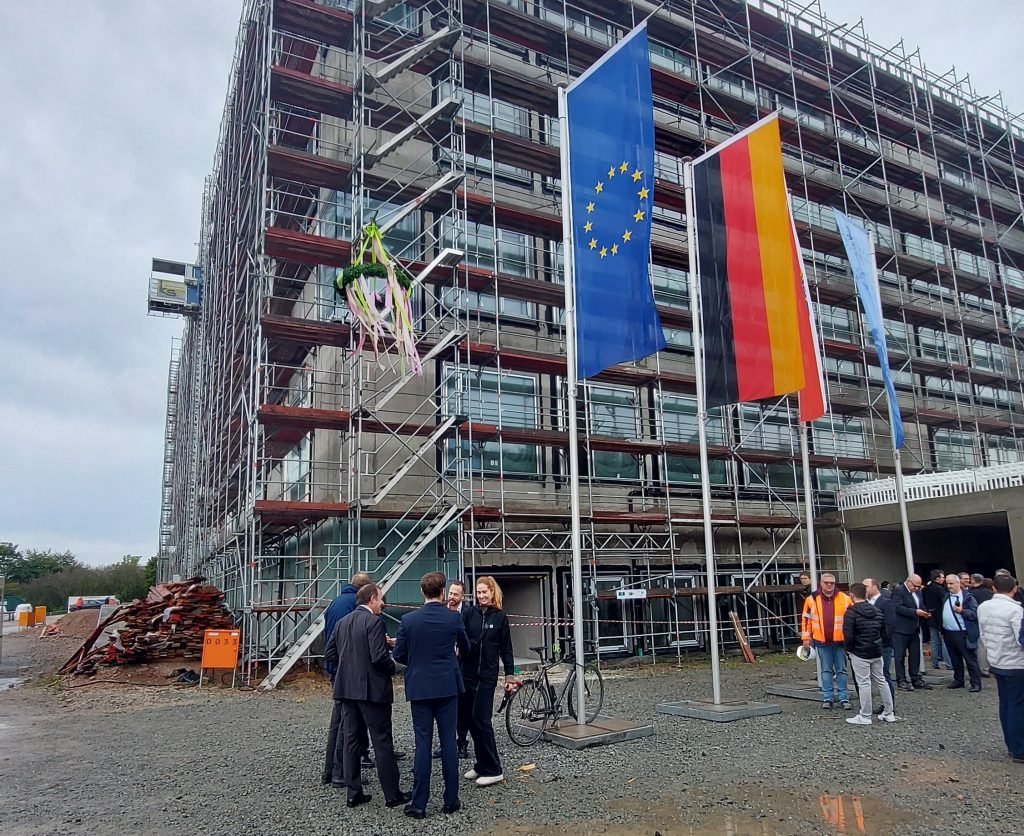
On September 26, 2024, the topping-out ceremony for the new building of the Chemical Institutes and the Technical Center at the Campus Riedberg of Goethe University in Frankfurt am Main was celebrated. Representatives of the university, the state of Hesse, and the city of Frankfurt gathered at the construction site to commemorate this important construction milestone. “In this new building, interdisciplinary research will continue to be conducted at an international level – in collaboration with all other disciplines on the Campus Riedberg as well as with the non-university research institutions,” explained Prof. Dr. Enrico Schleiff, President of Goethe University.
The new building consists of two parallel structures that meet the ever-changing demands of science with their modern laboratories and flexible research spaces. The design of the building, which harmoniously integrates with the existing campus architecture through the use of red brick, provides areas for communication and relaxation in the green courtyards between the buildings. A central corridor runs through the two building sections, innovatively connecting the areas of research and teaching.
The completion of the project is planned for 2026/2027 and will expand Campus Riedberg, where Gerber Architekten has successfully realized three other buildings since 2009, with a significant research facility.
Photo: © Gerber Architekten
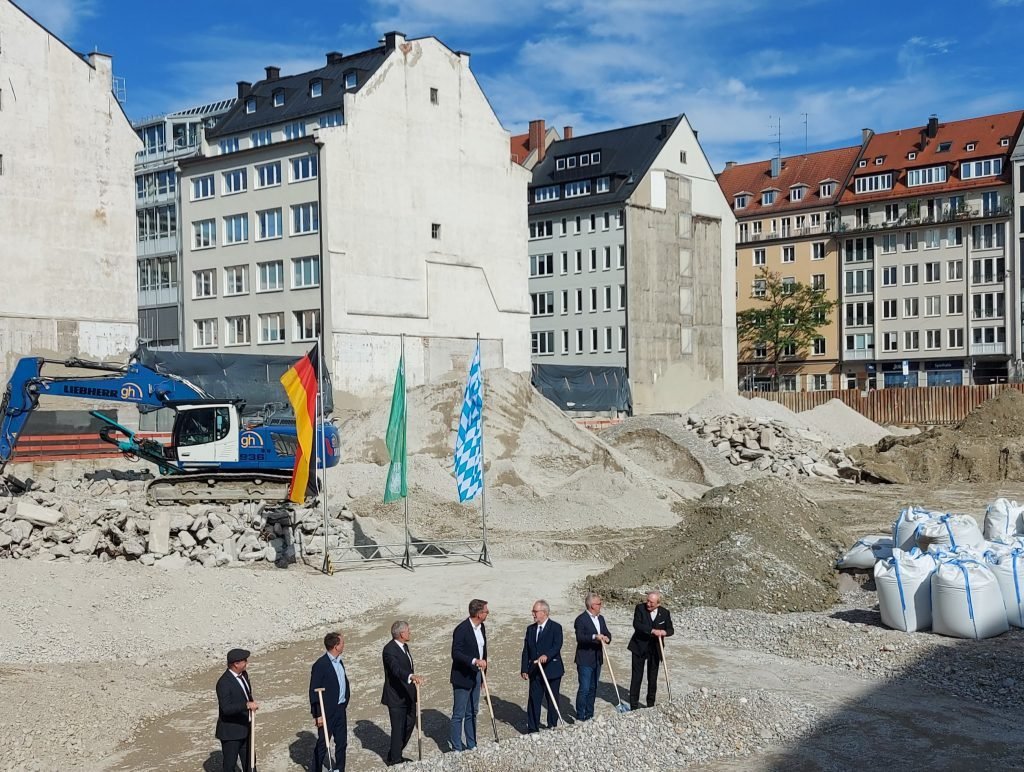
On 24 September 2024, the ground-breaking ceremony for the new geosciences and environmental sciences building was held on the campus of Ludwig-Maximilians-Universität (LMU) Munich. Munich’s Lord Mayor Dieter Reiter, representatives of the university and the Bavarian State Ministry of Science and the Arts were in attendance. “This new building is of great importance for our Faculty of Earth Sciences and offers our students and scientists excellent study and working conditions for their socially highly relevant research,” emphasised LMU President Dr Bernd Huber.
The sculptural building blends harmoniously into its surroundings and forms a transparent hall that serves as an entrance area and “shop window” for the sciences. Around 32,000 square metres of modern laboratory and workshop space as well as a comprehensive library landscape will be created. The multifunctional hall will be used as a public space for exhibitions and events, allowing research to be experienced directly. The new building is scheduled for completion in mid-2026 and will strengthen the presence of geosciences and environmental sciences in Munich.
Photo: © Gerber Architekten
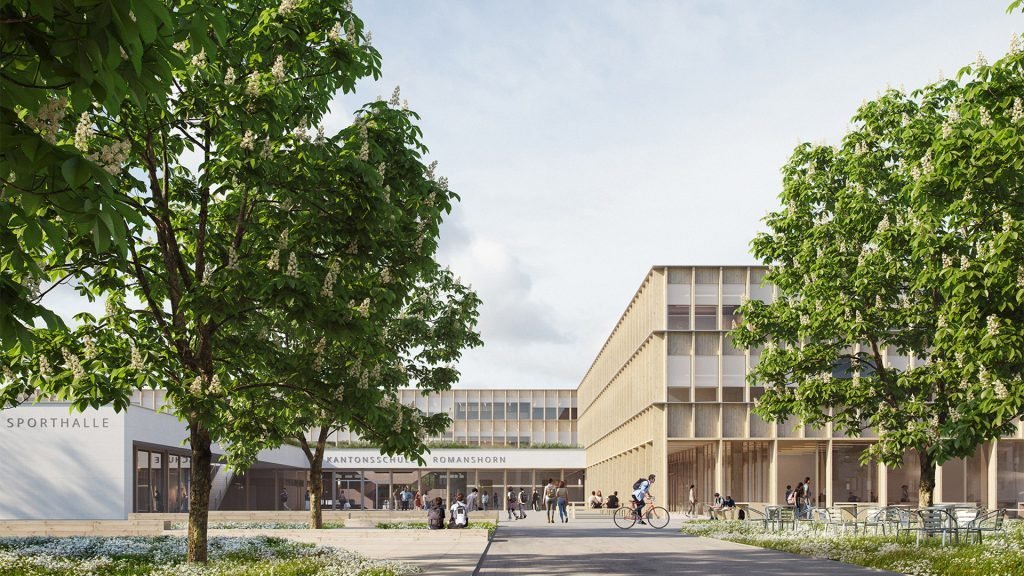
Gerber Architekten was awarded 1st place out of 49 participants for their design concept for the expansion and renovation of Kantonsschule Romanshorn in Switzerland.
The Kantonsschule Romanshorn, which has expanded over several years, exhibits a heterogeneous structure with significant construction and energy deficiencies. The current internal layout no longer meets modern requirements and features barriers and passage classrooms that necessitate a comprehensive overhaul of the existing facilities.
Our design particularly highlights the skillful combination of old and new elements, which is both complex and cost-effective, and creates a harmonious connection with the landscape. The integration of the main corridor and the elimination of split levels create a functional unit within a cohesive building mass without hierarchical distinctions. Specifically, the concept includes the long-term use of the existing real estate, supported by a precise potential and structural analysis. Additionally, the heterogeneous building stock is transformed with climate sensitivity, with renovation measures, horizontal extensions, and densification achieved with minimal land use. Complementing this, an extension concept is implemented in an economical, climate-friendly, and quickly realizable timber construction method. A special highlight is the rooftop gardens, which play a central role in shaping both the external and internal impact of the school.
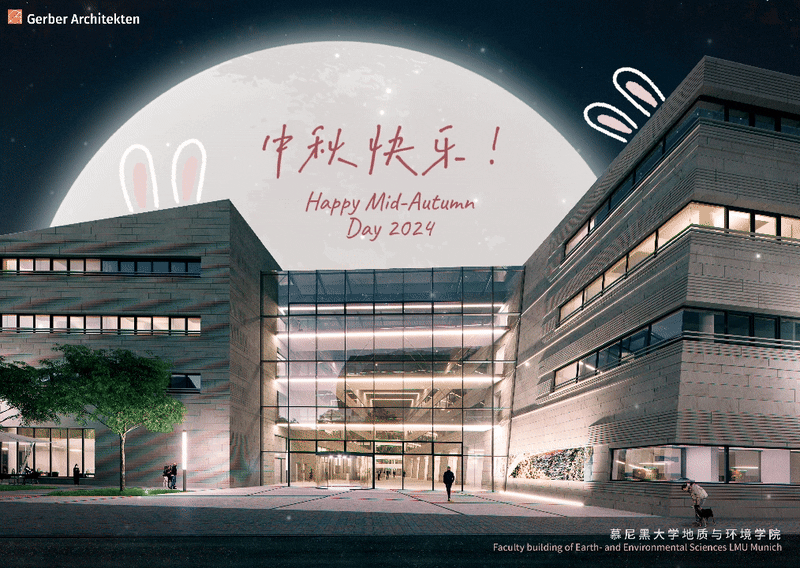
On the occasion of the Mid-Autumn Festival we send our warmest wishes to you and your families. May the full moon bring you joy, health and success. We thank you for the successful collaboration over the past year and look forward to more joint projects in the coming year. May all your wishes come true!
Happy Mid-Autumn Festival!